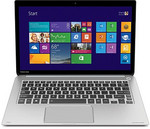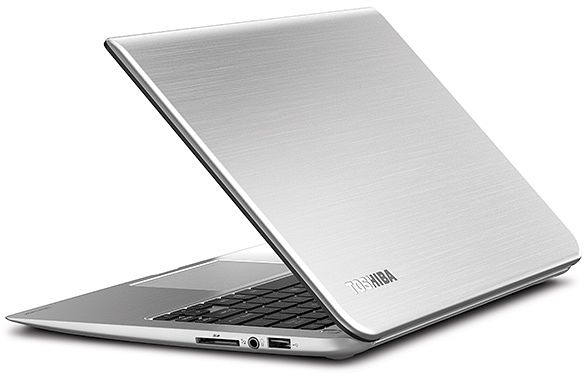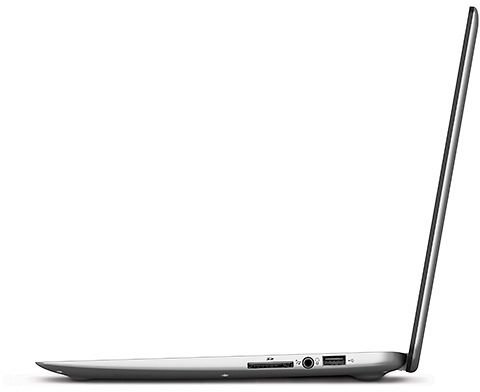Toshiba KIRA-102
Specifications

Price comparison
Average of 3 scores (from 4 reviews)
Reviews for the Toshiba KIRA-102
Source: Digital Versus
 Archive.org version
Archive.org versionThe Toshiba Kira-102 holds up well in the face of competition thanks to its excellent chassis, decent performance (despite an older-generation CPU) and good battery life. We like the use of new materials and the great contrast on the VA display. However, this laptop failed to win five stars due to its so-so screen colors and disappointing sound quality.
Single Review, online available, Medium, Date: 07/31/2015
Rating: Total score: 80% performance: 50% display: 60% mobility: 100%
Foreign Reviews
Source: Tuexperto
 ES→EN Archive.org version
ES→EN Archive.org versionPositive: Attractive design; excellent display; good backlit keyboard; excellent battery life. Negative: Mediocre graphic performance.
Single Review, online available, Very Short, Date: 09/10/2014
Source: 01Net
 FR→EN Archive.org version
FR→EN Archive.org versionSingle Review, online available, Very Short, Date: 07/10/2015
Rating: Total score: 80%
Source: Dinside
 NO→EN Archive.org version
NO→EN Archive.org versionSingle Review, online available, Short, Date: 09/16/2014
Rating: Total score: 83%
Comment
Model: The Toshiba KIRA-102 is an stylish looking ultrabook made to be carried around for work. The metallic aluminium casing finish gives it a smart look and is combined with a black keyboard with backlight. The 13 inch device is only about 9.5 mm thick and weighs only 1.3 kg. The LED backlit touchscreen features an aspect ratio of 16:9 and a resolution of up to 2560 x 1440 pixels. It runs on an Intel Core i7 with 8 GB DDR3L RAM. The RAM capacity can be further expanded by another 8 GB. The storage capacity is 256 GB in the form of an SSD.
For graphics it uses the integrated Intel HD graphics card. In addition, the ultrabook feature an audio combo jack, an HDMI port, three USB 3.0 ports, an SD card reader and a 1 MP HD front camera. For connectivity, it comes with a standard 11ac WiFi card with a Bluetooth 4.0. Finally, the KIRA-102 runs on a 4-cell Li-ion polymer battery, which can last up to 9 hours of continuous usage, which is rather above average for an ultrabook.
Intel HD Graphics 4400:
ULV integrated GPU (GT2) with 20 EUs found on certain Haswell CPU models.
Non demanding games should be playable with these graphics cards.
» Further information can be found in our Comparison of Mobile Graphics Cards and the corresponding Benchmark List.
Intel Core i7: The Intel Core i7 for laptops is based on the LG1156 Core i5/i7 CPU for desktops. The base clock speed of the CPUs is relatively low, but because of a huge Turbo mode, the cores can dynamically overclock to up to 3.2 GHz (920XM). Therefore, the CPU can be as fast as high clocked dual-core CPUs (using single threaded applications) but still offer the advantage of 4 cores. Because of the large TDP of 45 W / 55 W, the CPU is only intended for large laptops.
4510U: Haswell-based ULV dual-core processor clocked at 2.0 GHz with Turbo Boost support up to 3.1 GHz. Offers an integrated HD Graphics 4400 and a dual-channel DDR3 memory controller.» Further information can be found in our Comparison of Mobile Processsors.









